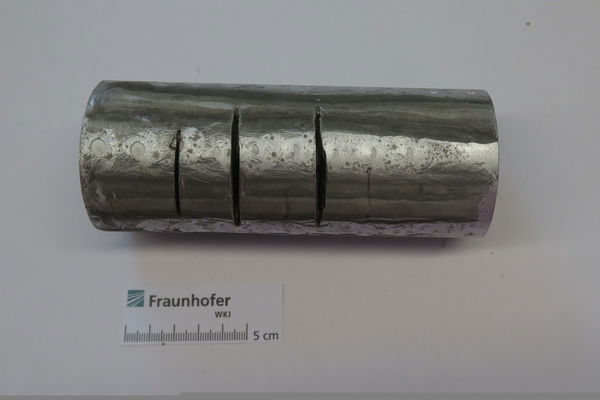Worlds first uncuttable metal could spell trouble for bike thieves
World's first 'uncuttable' metal created and it’s inspired by grapefruit and shells and could be used to make unbreakable bike locks

THE world's first uncuttable metal has been developed by a team of British and German engineers, with claims that it could be used to make thief-proof bike chains and locks.
The new material has been named Proteus after the Greek go of the sea, and the marine links don’t stop there. The molecular makeup of the material is inspired by the tough cellular skin of the grapefruit and the fracture-resistant shells of molluscs.
KTM 790 Adventure video review
The metal has small ceramic spheres that are encased in a cellular aluminium structure. When it is cut with an angle grinder or drill, the vibrations created by the ceramic spheres inside the casing blunt the cutting disc or drill bit, rendering it useless.
The vibration that builds between the tiny spheres creates an interlocking action on the cutting medium, turning the destructive force back on the implement and preventing it from cutting the metal.

Dr Stefan Szyniszewski, Assistant Professor of Applied Mechanics, in the Department of Engineering, Durham University, explained how the idea behind Proteus cam about:
'We were intrigued by how the cellular structure of the grapefruit and the tiled structure of mollusc shells can prevent damage to the fruit or the creatures inside, despite being made of relatively weak organic building blocks,' he explained.
'These natural structures informed the working principle of our metallic-ceramic material, which is based on dynamic interaction with the applied load, in contrast to passive resistance.
'Essentially cutting our material is like cutting through a jelly filled with nuggets. If you get through the jelly you hit the nuggets and the material will vibrate in such a way that it destroys the cutting disc or drill bit.'
The team has even tried cutting the material with a high-powered water jet, commonly used in metal fabrication to create intricate metal shapes. In this instance the ceramic spheres dispersed the water jet, greatly reducing its effectiveness.












